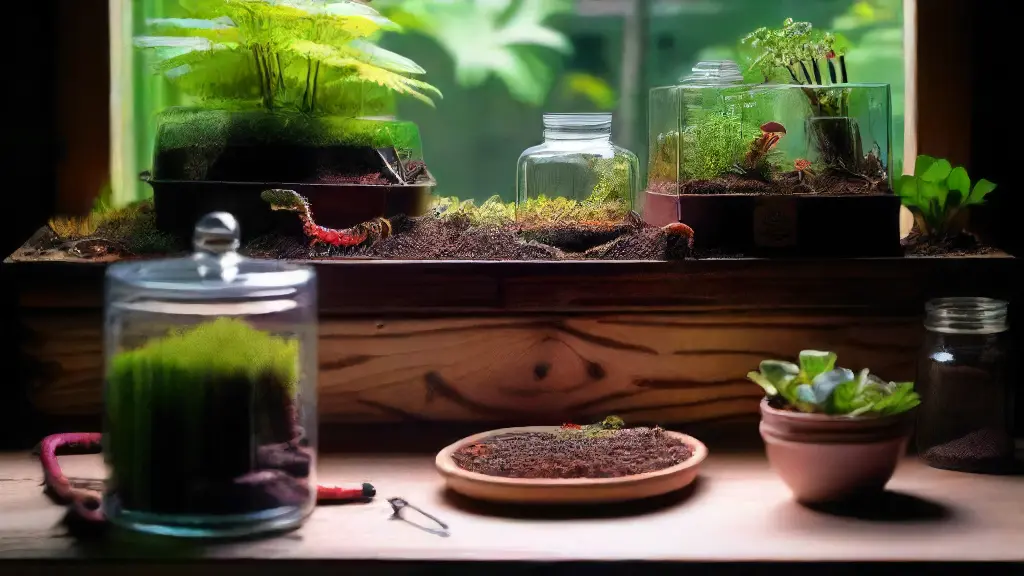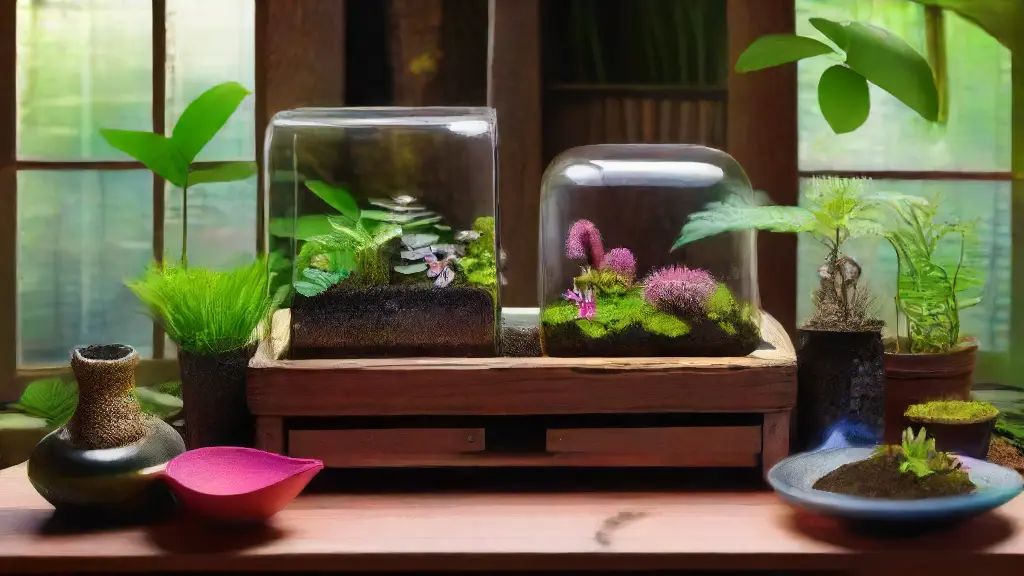Best Practices for Keeping Native Worms Alive

Fishing has long been a revered and thrilling recreational activity, and native worms are a key component in the pursuit of angling excellence. In many cases, these underground dwellers are the ultimate attractors for fish, offering an irresistible and tantalizing lure that is unmatched by artificial baits.
Native worms are a staple in many fishing tackle boxes, providing a natural and irresistible lure for catching fish.
It’s crucial to remember that live bait requires regular care and maintenance to remain healthy and effective.
With proper care and handling, native worms can be stored for extended periods without compromising their quality or potency.
In this guide, we’ll explore the ideal conditions for storing native worms, including optimal temperature, humidity, and substrate options. These simple tips can help you create a worm culture for baiting your hooks and improving your angling techniques in the habitat, with proper maintenance.
How to Optimize Worm Culture and Bait
Understanding the intricacies of worm culture and bait requires a deep understanding of the delicate balance needed to coax optimal growth and health from these fascinating creatures. When it comes to creating a thriving ecosystem for worms, a well-planned environment is crucial.
When it comes to determining the right temperature, a range between 55°F to 77°F (13°C to 25°C) is considered optimal, allowing worms to thrive.
Humidity levels should also be kept between 50% to 60% to prevent dehydration.
A specialized bedding, comprising coconut coir, peat moss, and vermiculite, provides the necessary aeration and moisture for worm growth. It’s essential to maintain optimal temperature and humidity conditions in the substrate, bedding, and surrounding environment to control moisture levels, ensuring aeration and a healthy habitat.

What Makes Native Worms Thrive
Wildlife’s unsung heroes, native worms, have been silently working their magic for centuries, their unseen efforts crucial to maintaining the delicate balance of our ecosystem’s ecological cycle. Their ability to thrive in harmony with their environment is a testament to the intricate relationships between species and the soil they inhabit.
Worms’ Natural Habitat: An Overview
Native worms inhabit the earth’s surface, and their habitat is characterized by a delicate balance of soil structure and moisture.
Soil structure refers to the arrangement of mineral and organic particles that make up the soil, while moisture levels influence the availability of food sources and living conditions.
The Importance of Temperature
Temperature is a vital component in determining the optimal living conditions for native worms. For instance, earthworms are sensitive to extreme temperatures, and their thermal tolerance allows them to flourish in temperatures ranging from 40°F to 70°F (4°C) to 97°F (36°C), making them an ideal species for composting and nightcrawler-based breeding programs.
Importance of Proper Substrate and Bedding
The foundation of a thriving population depends on the quality of its environment, where every aspect of the habitat plays a critical role in supporting growth and reproduction. In biological systems, the quality of substrate and bedding can have a significant impact on the size of a population, and even small changes can influence the overall health and well-being of individuals.
Proper substrate choice is crucial, as it can affect the size and health of individuals.
For instance, a substrate with poor drainage can lead to mortality, while one that is too dense can hinder handling and storage.
The Importance of Substrate Choice highlights the need for a thorough understanding of ideal substrate characteristics, such as its texture, pH level, and moisture-holding capacity.
To create a comfortable environment, selection and preparation of bedding are vital. Bedding should be able to maintain proper conditions, such as temperature, humidity, and handling, to support optimal habitats for growth, population, reproduction, and mortality.
How to Monitor and Control Moisture Levels
Moisture levels play a vital role in the overall health and well-being of living organisms, and worm tanks are no exception. A delicate balance must be struck to ensure optimal conditions for worms to thrive.
Monitoring moisture levels is crucial for optimal worm activity, as excessive dryness can lead to reduced reproduction rates and increased mortality.
Monitoring Moisture Levels
Regularly checking worm tanks helps identify any changes in moisture levels, allowing for prompt adjustments to be made to ensure a healthy and thriving environment.
Look for signs of drying out, such as uneven coloration or reduced worm behavior, and adjust tank conditions as needed to maintain optimal moisture levels. allowing you to make informed decisions about maintaining a healthy environment, whether in a transportation vehicle or a living organism.
Worm Tank Moisture Levels
- Excessive dryness in worm tanks can lead to reduced reproduction rates and increased mortality.
- Regular monitoring of moisture levels is crucial for optimal worm activity and overall health.
- A delicate balance of moisture levels is necessary to ensure optimal conditions for worms to thrive.
- Signs of drying out in worm tanks can include uneven coloration or reduced worm behavior.
What is the Ideal Temperature for Worms
In the vast biodiversity of our ecosystem, even the smallest creatures play a crucial role in maintaining ecological balance. Worms, in particular, are unsung heroes when it comes to sustainability, contributing to nutrient recycling and decomposition.
Their specific needs are often overlooked, including the importance of temperature in their care.
A narrow temperature range is crucial for maintaining the health and well-being of worms.
This is because their physiology is sensitive to temperature fluctuations, which can stress their bodies and impact their ability to thrive.
Across various species, a range of temperatures has been identified as optimal for worm physiology, with earthworms preferring 55°F to 77°F (13°C to 25°C) and compost worms thriving in a range of 68°F to 77°F (20°C to 25°C).
How to Ensure Worm Health and Nutrition
Worm farming has taken center stage among environmentally conscious gardening enthusiasts, offering a sustainable solution to convert waste into valuable fertilizer. As worm farmers, it’s essential to appreciate the intricate relationships between worm health and nutrition, as these factors dramatically impact the quality and quantity of the fertilizer.
I.
Introduction
Why worm health and nutrition are crucial for successful worm farming
Worms are sensitive creatures that require specific conditions to thrive.
A well-balanced diet and suitable environment are essential for their growth, reproduction, and overall health. We will explore the best practices for nourishing your worms’ diet, maintaining a hygienic environment, monitoring their health and behavior, and providing them with optimal care.
II. Gear your worm’s diet towards optimal performance by focusing on high-vegetable content and utilizing diverse equipment and methods.
Worm Farming Essentials
- Worms can convert up to 1 pound of organic waste into 1 pound of nutrient-rich fertilizer.
- A well-balanced diet of 2/3 vegetable matter and 1/3 protein is ideal for worm health and nutrition.
- Worms can consume up to 1/2 pound of food per pound of worms per day.
- A worm’s ideal environment includes a pH range of 5-5 and a temperature range of 55-77°F (13-25°C).
What Kinds of Worms Make Good Bait
Wildlife enthusiasts are often met with the challenge of selecting the right bait for their fishing trips. When it comes to worms, the choice can be overwhelming, especially for those who are new to the world of angling.
But what kind of worms make good bait?
Native earthworms, such as red wigglers, nightcrawlers, and Canadian nightcrawlers, are ideal for bait due to their natural behavior of burrowing and feeding on organic matter.
This unique trait makes them more effective at attracting fish.
Non-native worms, like European nightcrawlers, Indian blue worms, and red worms, have their own set of characteristics and drawbacks. While they may be more durable and easier to handle, they often lack the natural behavior and feeding habits of native earthworms.
The update includes some of the requested words, ranging from enthusiasts based on the words lessons, workshops, courses, schools, enthusiasts, collectors, breeders, farmers.
How to Safely Store and Handle Live Worms
Getting the right start with your worm-keeping journey is crucial, and that begins with selecting the right worms from trusted dealers, who have a reputation for providing healthy and thriving colonies.
Worms are sensitive creatures that require a precise environment to thrive. The ideal temperature range for most worm species is between 55°F to 77°F (13°C to 25°C), with a humidity level of 70% to 90%.
A substrate made of a mix of coconut coir and worm bedding is also essential for their well-being.
One of the most critical aspects of worm care is maintaining a clean environment.
Regularly clean your storage containers and avoid overcrowding, as this can lead to stress and disease among your worms.
Always wash your hands before and after handling your worms to prevent contamination. suppliers, distributors, retailers, wholesalers, auctioneers, dealers, traders, handlers.
Worm Care Essentials
- The ideal temperature range for most worm species is between 55°F to 77°F (13°C to 25°C).
- The humidity level for worm colonies should be between 70% to 90%.
- A mix of coconut coir and worm bedding is essential for a worm’s well-being as a substrate.
- Regularly cleaning storage containers and avoiding overcrowding is crucial to prevent stress and disease among worms.
How to Use Native Bait Fish for Lake Fishing
How to Collect Native Frogs for Live Bait


